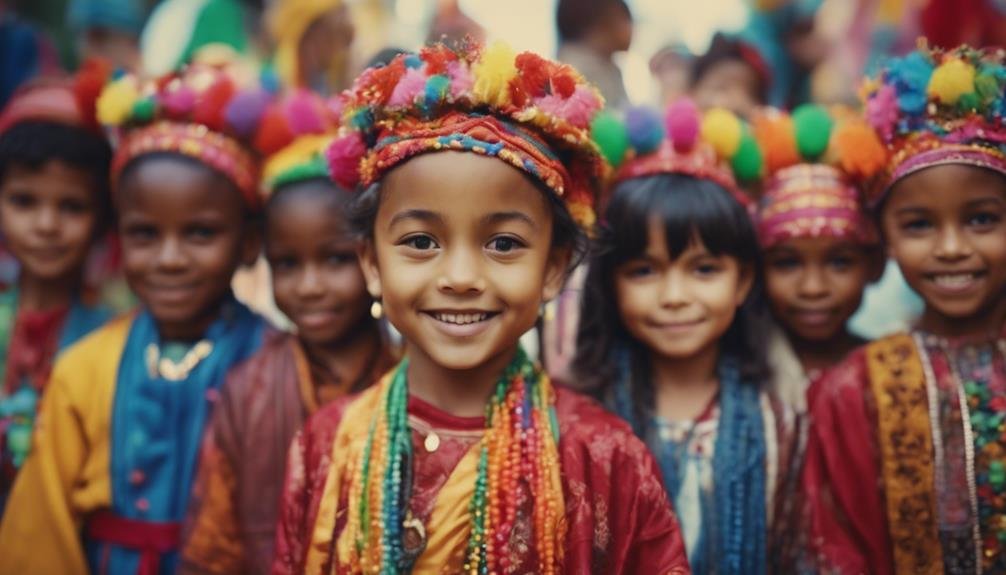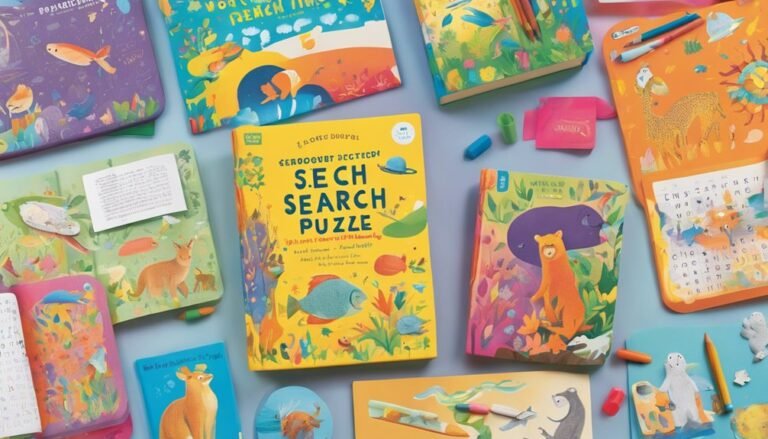Teaching Your Child About Diversity and Inclusion From an Early Age
They say, 'It takes a village.' When it comes to raising children who appreciate diversity and inclusion, starting early sets the foundation for a brighter, more accepting future.
How can you guide your little one through the beautiful tapestry of our world, instilling values of respect and understanding? Let's uncover practical ways to cultivate a mindset of openness and empathy, shaping a generation that embraces differences with open arms.
Key Takeaways
- Start early to instill values of diversity and inclusion.
- Create a safe space for open conversations and empathy.
- Explore and appreciate cultural celebrations for global understanding.
- Foster inclusivity through inclusive playgrounds and social interactions.
Importance of Early Education

To truly instill values of diversity and inclusion in children, starting early in their education is essential. Developing social awareness and a global perspective from a young age lays a strong foundation for understanding and appreciating differences in others. Children are naturally curious and open-minded, making them receptive to learning about various cultures, traditions, and perspectives.
Introducing concepts of diversity and inclusion in early education helps children develop empathy and respect for people from different backgrounds. By promoting social awareness, educators and parents can encourage children to recognize inequality and injustice, fostering a sense of responsibility to create a more inclusive society.
Through age-appropriate activities and discussions, children can begin to understand the importance of embracing diversity and viewing the world through a global lens. Early education sets the stage for cultivating a generation that values unity amidst differences and actively contributes to a more inclusive and harmonious future.
Embracing Differences Together
Start exploring how you can come together to celebrate and appreciate our differences as a community. Embracing differences is a beautiful way to promote acceptance and celebrate uniqueness. Here are some ways to embrace differences together:
- Encourage Open Conversations: Create a safe space where everyone feels comfortable sharing their thoughts and experiences.
- Practice Empathy: Teach your child to understand and share the feelings of others, fostering a sense of connection.
- Celebrate Diversity: Organize activities that highlight different cultures, traditions, and backgrounds within your community.
- Lead by Example: Show your child through your actions how to respect and value everyone, regardless of differences.
- Collaborate on Projects: Work on projects that involve teamwork and cooperation, emphasizing the strength found in diversity.
Exploring Cultural Celebrations

Let's immerse ourselves in the vibrant world of cultural celebrations and discover the beauty of traditions from around the globe. Festive traditions and global holidays offer us a kaleidoscope of colors, sounds, and flavors that make the world a rich tapestry of diversity. From the colorful Holi festival in India to the lantern-lit Mid-Autumn Festival in China, each celebration tells a unique story of history and culture.
Exploring these cultural celebrations with your child can spark curiosity and open their eyes to the wonders of the world beyond their own. It's a chance to learn about different ways people express joy, gratitude, and unity. By sharing in these festivities, your child not only gains knowledge but also cultivates empathy and respect for others' traditions.
Through these experiences, children can begin to understand that while we may have different customs and beliefs, at the heart of it all, we're united in our shared humanity. So, take a journey together through the world of cultural celebrations, and let the magic of diversity enrich your lives.
Encouraging Empathy and Kindness
Immerse yourself in acts of kindness and empathy as you explore ways to make a positive impact on those around you. Developing empathy in children is essential for fostering inclusive and compassionate individuals. Engaging in kindness activities not only benefits others but also nurtures your child's emotional intelligence and social skills.
Here are some simple yet powerful ways to encourage empathy and kindness in your child:
- Volunteer Together: Show your child the value of helping others by volunteering at local organizations or participating in community service projects.
- Practice Active Listening: Teach your child to listen attentively to others without judgment, validating their feelings and experiences.
- Lead by Example: Demonstrate acts of kindness in your daily interactions, whether it's helping a neighbor or showing appreciation to service workers.
- Read Books About Empathy: Explore children's books that highlight empathy, diversity, and kindness to spark meaningful conversations with your child.
- Encourage Perspective-Taking: Help your child understand different viewpoints by discussing various scenarios and how others might feel in those situations.
Fostering Inclusive Playgrounds

Engage children in inclusive playground activities that promote collaboration and friendship among all participants. By encouraging kids to play together regardless of their differences, you're promoting unity and building bridges that can last a lifetime. Inclusive playgrounds offer a space where children can learn to appreciate diversity and develop empathy towards others.
When you foster inclusive playgrounds, you create an environment where every child feels valued and included. Encourage games that involve teamwork and cooperation, emphasizing the importance of supporting one another. By doing so, you're teaching children the beauty of inclusivity and the strength that comes from standing together.
Promoting unity on the playground not only benefits the children playing but also sets a powerful example for others. As kids learn to interact with peers from various backgrounds, they develop essential social skills and a deeper understanding of diversity. Inclusive playgrounds are where friendships bloom, differences are celebrated, and lasting bonds are formed. So, go ahead, create a playground where all children feel welcome, connected, and appreciated.
Frequently Asked Questions
How Can Parents Address the Topic of Privilege and Inequality With Their Young Children in a Developmentally Appropriate Way?
When talking to young children about privilege and inequality, it is crucial to start with simple examples using everyday situations. Encourage curiosity and empathy by asking questions and listening actively. Make it relatable and foster understanding.
Are There Any Recommended Resources or Books Specifically Tailored to Teaching Young Children About Diversity and Inclusion?
Join storytime activities and interactive workshops for creative storytelling and inclusive playtime. Discover recommended resources and books tailored to teach young ones about diversity and inclusion. Engage together and learn through fun experiences.
How Can Parents Navigate Conversations About Sensitive Topics Such as Racism and Discrimination With Their Children?
Handling difficult conversations with kids about racism and bias is crucial. Use media insights to ignite discussions. Embrace cultural festivities and community engagements. Be open, listen actively, and foster empathy to promote understanding.
What Are Some Strategies for Promoting Inclusivity and Acceptance Among Peers in a Child's Social Circle?
Hey there, when it comes to fostering inclusivity and acceptance among peers in your child's social circle, encouraging empathy, celebrating differences, and modeling respectful behavior can go a long way in nurturing positive peer relationships and strong social skills.
How Can Parents Ensure That Their Child's School or Daycare Environment Is Actively Promoting Diversity and Inclusion?
To guarantee your child's school promotes diversity and inclusion, get involved in school policies and community activities. Encourage diverse classroom activities and advocate for teacher training on inclusivity. Your engagement can create a more accepting environment for all students.
Conclusion
As a parent, it's essential to teach your child about diversity and inclusion from a young age.
Did you know that children who learn about different cultures and perspectives early on are more likely to be open-minded and accepting?
By embracing differences, exploring cultural celebrations, and fostering empathy, you're setting the foundation for a more inclusive future for your child.
Start these conversations now to make a positive impact on their development.








